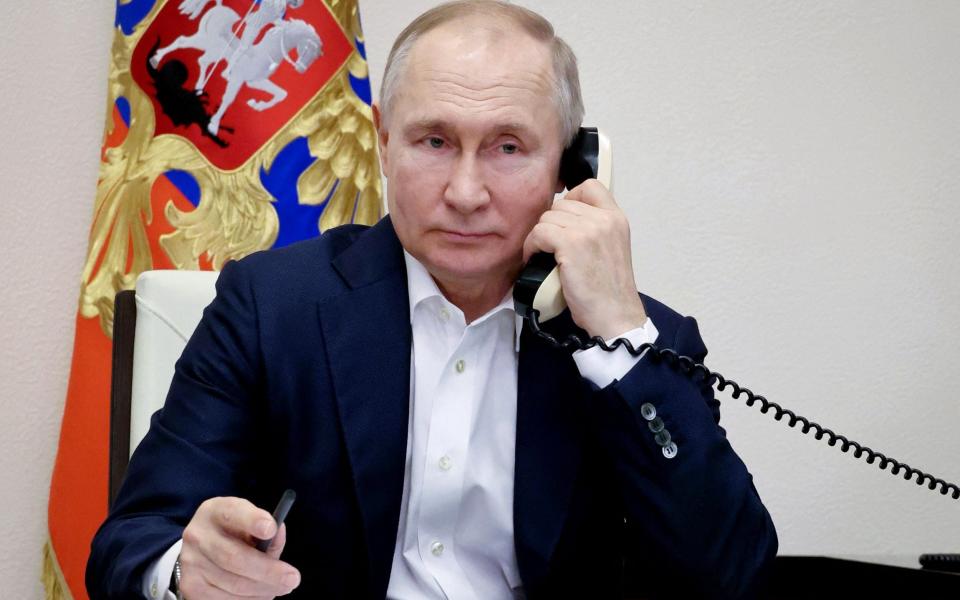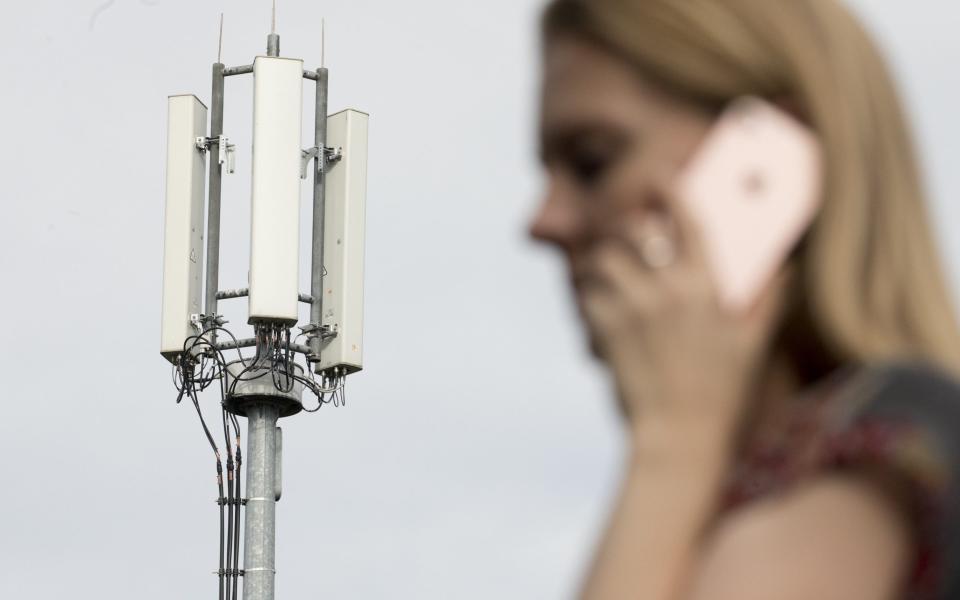How Putin’s war killed off the 5G dream

When EE launched its 5G network with a performance by Stormzy on a floating stage in front of Tower Bridge, it was uncompromising in its claims about the new mobile technology.
“5G will create new experiences with augmented reality, make our customers’ lives easier, and help launch entirely new businesses that we haven’t even imagined,” said boss Marc Allera.
But almost four years later, and as the industry gathers for its traditional annual junket in Barcelona this week – the first full-blown Mobile World Congress since global travel restrictions were lifted – this triumphalism will be markedly absent.
Surging energy prices after Vladimir Putin's invasion of Ukraine, a lack of consumer technology that needs the extra speed, and a lack of interest from business customers means the great 5G revolution has rapidly run out of steam.
“5G hasn’t worked – and the industry can’t repeat the same mistake”, says William Webb, the former director of technology at Ofcom.
Six years ago, Webb published an analysis called The 5G Myth, arguing that the industry risked hubris by barking madly up the wrong tree. While in 2017 few would have agreed publicly, his critique now looks increasingly vindicated.
At the heart of 5G’s perceived shortcomings is consumer apathy. While 2G gave the world mass market digital mobile phones, and 4G gave us mobile broadband, the benefits of 5G to consumers are more elusive.

Even Vodafone has joined in as something of a party pooper. Santiago Tenorio, fellow and network architect director at Vodafone, says the early years of a new technology often underwhelm.
“At the beginning of every new ‘G’, the reality was not following the hype,” he says.
“With 3G and 4G we were promised that it was completely going to transform society and change the way you live.
“But three years on, your phone looks exactly the same and only the icon has changed, and the hype has turned into complete disappointment, and people thought we were doing it for nothing.”
Kester Mann, an analyst at CCS Insight, agrees that 5G was “over-hyped”.
“I think this is partly because the industry gets ahead of itself and gets overly excited and promises more than it can deliver,” he says.
“There’s no doubt that it is good technology. It works, and we’ve seen improvements in performance… but we haven’t really seen the exciting new apps emerge yet like we did in the 4G era, it’s not really changed anything markedly.”
Only one in five UK phones could even connect to a 5G network at the end of 2022, according to Ofcom.
A spokesman for Mobile UK, which represents the network operators, said: “5G is hugely important to modern networks as it provides a huge capacity boost. Existing and legacy technologies simply do not have the capacity capability that 5G offers.”
Yet for Webb, engineers, corporate strategists and policy makers got carried away when designing 5G and lost sight of the basics.
“Consumers want better coverage, solid reliability, and low prices,” he says. “So the focus should have been on improving coverage, and lowering the costs further. Instead, they focused on pumping the data along 10 times faster.”
Beyond a certain speed, however, people don’t care if the download is faster, Webb argues – but they do notice the so-called not spots and coverage dropouts.
Dean Bubley of Disruptive Wireless agrees that refocusing the industry on lowering cost and improving the consumer experience is long overdue. He’s been derisive of outlandish marketing pitches about “the metaverse for dolphins”.
In further blow to the network operators’ ambitions, the surge in energy costs following Putin’s invasion of Ukraine is also taking its toll.
5G’s power-thirsty new radio equipment eats up far more energy – around twice as much as 4G, according to Webb. With energy making up around 10pc of the network’s operating cost, there is a risk that higher bills could be passed on to the customer.

It comes amid existing concerns about sharp price rises across the telecoms sector. Ofcom is nervous that operators will exercise their right to roll out above-inflation mid-contract price rises of as much as 17pc, and launched an inquiry earlier this month.
Vodafone’s Tenorio argues that 5G is in fact greener than its predecessor and the higher energy costs come from greater traffic.
“5G has been blamed for increased energy costs, but 5G has been the solution to the problem, not the cause,” he says. “Per bit, it’s ten times more efficient.”
Yet this highlights the dilemma for the operators: they have to run to keep still. Data traffic grew by 37pc in the UK between 2020 and 2021, and 27pc last year, according to Ofcom.
5G was designed with new features that would allow networks to escape this trap, and evolve from the cutthroat consumer market into enterprises, doing the job that WiFi does today. But ominously, 5G has not been able to fulfil this promise – so far at least.
The vision was that organisations would roll out their own private 5G networks, with dedicated spectrum, to run 5G in their factories, offices or warehouses.
Network builders are now much more realistic. One private 5G licence holder confided last year: “If we’re honest, the best immediate improvement an organisation can do today is to upgrade their WiFi estate as a business. WiFi is developing at a pace almost at parity with 5G.” As Bubley notes, “The cool 5G stuff is late – and doesn’t go through walls.”
For 5G to make inroads into enterprise it needs to reach the so-called “standalone” or “real 5G” phase – with new technology from top to bottom of the network.
But as Iain Morris of the industry bible Light Reading notes: “Most telcos show few signs of a standalone rush”. There were just 35 standalone 5G networks worldwide at the end of last year, according to a report by Ericsson.
So in doubling down on 5G, did the UK back the wrong horse? Webb blames the political and bureaucratic class for being fixated on 5G.
“The political pressures and the cultures are naturally biased to jump on the latest hot trend,” he says.
“They should have helped operators and users by working to improve coverage, and make services more reliable – things that you can do quite cheaply and easily.”
So as the telecoms world descends on Barcelona, the industry may need to call time on its relentless need for speed and focus instead on what matters to customers.
“Now is not the right time to start talking about 6G,” says Tenorio. “Can we just hold on please?"

 Yahoo Finance
Yahoo Finance 